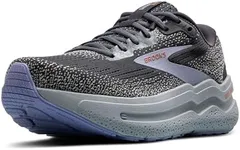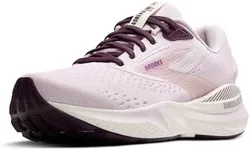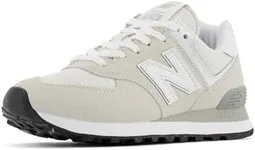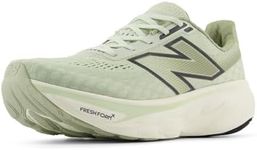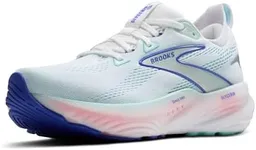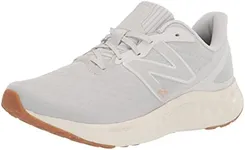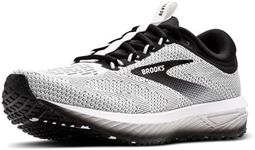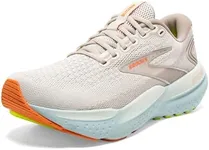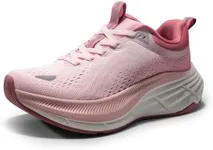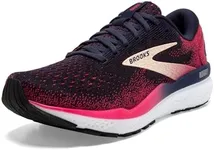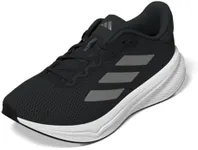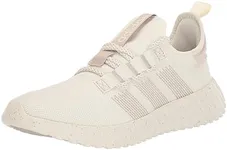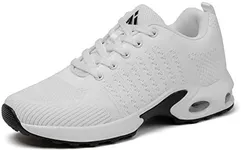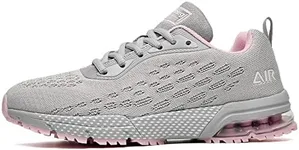Buying Guide for the Best Running Shoes Womens
Choosing the right running shoes is crucial for comfort, performance, and injury prevention. The right pair of shoes can make a significant difference in your running experience, whether you're a beginner or a seasoned runner. When selecting running shoes, consider factors such as your foot type, running style, and the surfaces you typically run on. Here are some key specifications to help you make an informed decision.CushioningCushioning refers to the amount of padding in the shoe, which affects comfort and shock absorption. It's important because it can help reduce the impact on your joints and muscles. Shoes with maximum cushioning are ideal for long-distance runners or those who run on hard surfaces, as they provide the most shock absorption. Moderate cushioning is suitable for most runners, offering a balance between comfort and responsiveness. Minimal cushioning is best for those who prefer a more natural running feel and have a strong running form. Consider your running distance, surface, and personal comfort preference when choosing the level of cushioning.
Arch SupportArch support is the level of support provided to the arch of your foot. It's important because it helps maintain proper alignment and can prevent injuries. There are three main types of arch support: neutral, stability, and motion control. Neutral shoes are best for runners with a normal arch who don't overpronate (roll their foot inward excessively). Stability shoes offer extra support for mild to moderate overpronators. Motion control shoes provide the most support and are ideal for severe overpronators. To determine your arch type, you can do a wet test or consult a specialist.
Heel-to-Toe DropThe heel-to-toe drop is the difference in height between the heel and the forefoot of the shoe. It's important because it affects your running mechanics and can influence your comfort and performance. A high drop (8-12mm) shifts more impact to your knees and hips, which can be beneficial for heel strikers. A medium drop (4-8mm) offers a balance and is suitable for most runners. A low drop (0-4mm) promotes a more natural running style and is preferred by forefoot or midfoot strikers. Consider your running style and any existing injuries when choosing the heel-to-toe drop.
Fit and SizeThe fit and size of the shoe are crucial for comfort and performance. A well-fitting shoe should have enough room in the toe box to wiggle your toes, a snug fit around the midfoot, and a secure heel. It's important because an ill-fitting shoe can cause blisters, discomfort, and even injuries. When trying on shoes, wear the same type of socks you plan to run in and try them on later in the day when your feet are slightly swollen. Make sure there's about a thumb's width of space between your longest toe and the end of the shoe. Consider the shape and width of your foot when selecting the fit.
BreathabilityBreathability refers to how well the shoe allows air to circulate, keeping your feet cool and dry. It's important because it can prevent overheating and reduce the risk of blisters and fungal infections. Shoes with mesh uppers or ventilation features offer better breathability. If you run in hot or humid conditions, prioritize shoes with good breathability. For colder climates, you might prefer shoes with less ventilation to keep your feet warm.
DurabilityDurability is the shoe's ability to withstand wear and tear over time. It's important because it determines how long the shoes will last and how well they will maintain their performance. Durable shoes are typically made with high-quality materials and reinforced in high-wear areas like the outsole and toe box. If you run frequently or on rough terrain, look for shoes with a durable construction. For occasional runners or those who run on smooth surfaces, durability might be less of a concern.
WeightThe weight of the shoe can affect your running efficiency and speed. It's important because lighter shoes can help you run faster and feel less fatigued. Lightweight shoes are ideal for racing and speed workouts, as they allow for quicker movements. However, they may offer less cushioning and support. Heavier shoes typically provide more cushioning and support, making them suitable for long-distance runs and everyday training. Consider your running goals and the type of runs you do most often when choosing the weight of your shoes.
